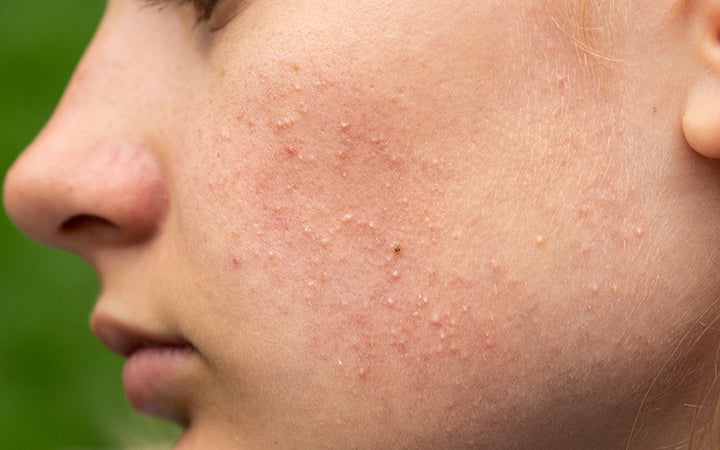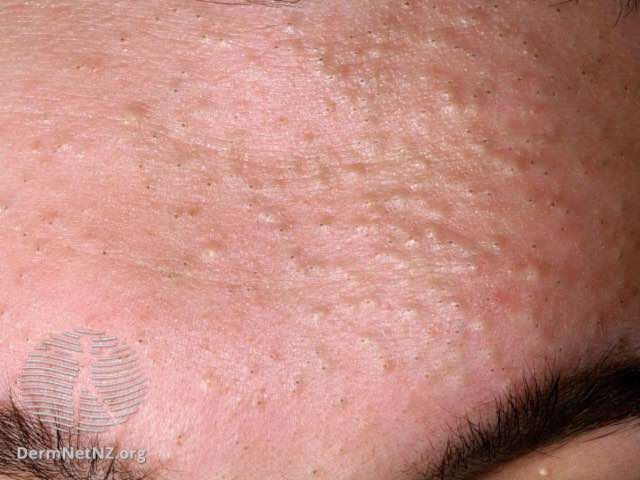Comedonal Acne Overview

A basic Comedonal Acne overview should include the causes, symptoms, and treatment options. Although acne is most common in teenagers and young adults, it can occur at any time. Changes in hormones are probably one of the main causes, and excess oil production is another cause. Here is a look at what Comedonal Acne is and how to treat it. You can learn more about the most common forms of acne below.
Comedonal Acne is a non-inflammatory form of acne. The term comes from the Greek word comedo, which means pore. A blackhead is a plugged follicle. Sebum is a natural oil produced by the sebaceous glands and gives the skin its glossy appearance. A blackhead is an open comedo, and it results from oxidation, the same chemical process that turns fruit brown.
Comedonal acne begins with an increase in sebum production in the sebaceous glands. Blockage of the hair follicle or sebaceous duct causes the formation of a comedone. This type of acne usually does not cause inflammation, and its treatment is the same as for other forms. It is important to follow the correct skin care regimen. It is important to avoid using harsh cleansers on the affected area to prevent the formation of a comedone.
Comedonal acne is an important part of a person’s daily skin care routine. It is important to get a complete understanding of the different types of comedones and how to treat them at the health site https://newslite.sg/. This way you can make sure you are using the right product for your specific acne type. When choosing a topical comedonal treatment, choose one that is designed to treat comedones and strictly follow it.
It’s important to know what comedones are. This type of acne is a precursor to the more serious acne disorder known as acne vulgaris. People with comedonal acne are more likely to develop pimples than those with acne vulgaris. This type of acne is typically non-inflammatory and occurs along the sebaceous glands of the skin. However, the treatment for this type of acne is the same as for any other type of inflammatory acne.

While the causes of comedonal acne are unknown, it is important to know that it’s a common precursor to acne vulgaris. While comedones are not the same as pimples, they can still be an indicator that you may be at risk for acne vulgaris. The underlying cause of acne is the excessive production of hormones called androgens. These hormones stimulate the sebaceous glands to produce more sebum.
Despite its similarity to acne vulgaris, comedones do not look like the typical acne. Its red and inflamed appearance is rare. It doesn’t contain pus. Most comedones are open or closed. While they do not have inflammatory lesions, they do tend to be small bumps on the skin. As a result, they do not look like typical acne. They are a part of the pilosebaceous glands, and can develop alongside the more common form of acne vulgaris.
Although comedonal acne is a form of acne vulgaris, it is not a separate disorder. It is a noninflammatory form of acne, and the main causes are hormonal and genetic. The hormones and sebaceous glands can be triggered by certain situations, but are usually noninflammatory. The only difference between a comedonal acne and a typical acne is that it’s a subtype of pimples that doesn’t cause inflammation.
Unlike typical acne, comedones don’t appear red and inflamed. They also don’t produce pus. Unlike acne vulgaris, however, comedones are not inflammatory. A comedonal acne outbreak will not affect a person’s quality of life, but it can be a symptom of another underlying condition. It is often difficult to differentiate between the two types of pimples and a comedololacia.
The most common type of comedonal acne is the type of acne characterized by blackheads. Inflammatory acne is an acne that causes pustules and red bumps. It is the most common form of acne and is often the most common type. There are several ways to treat it, and the best way to prevent it is to take care of yourself. Besides being unsightly, a comedolo is also uncomfortable.